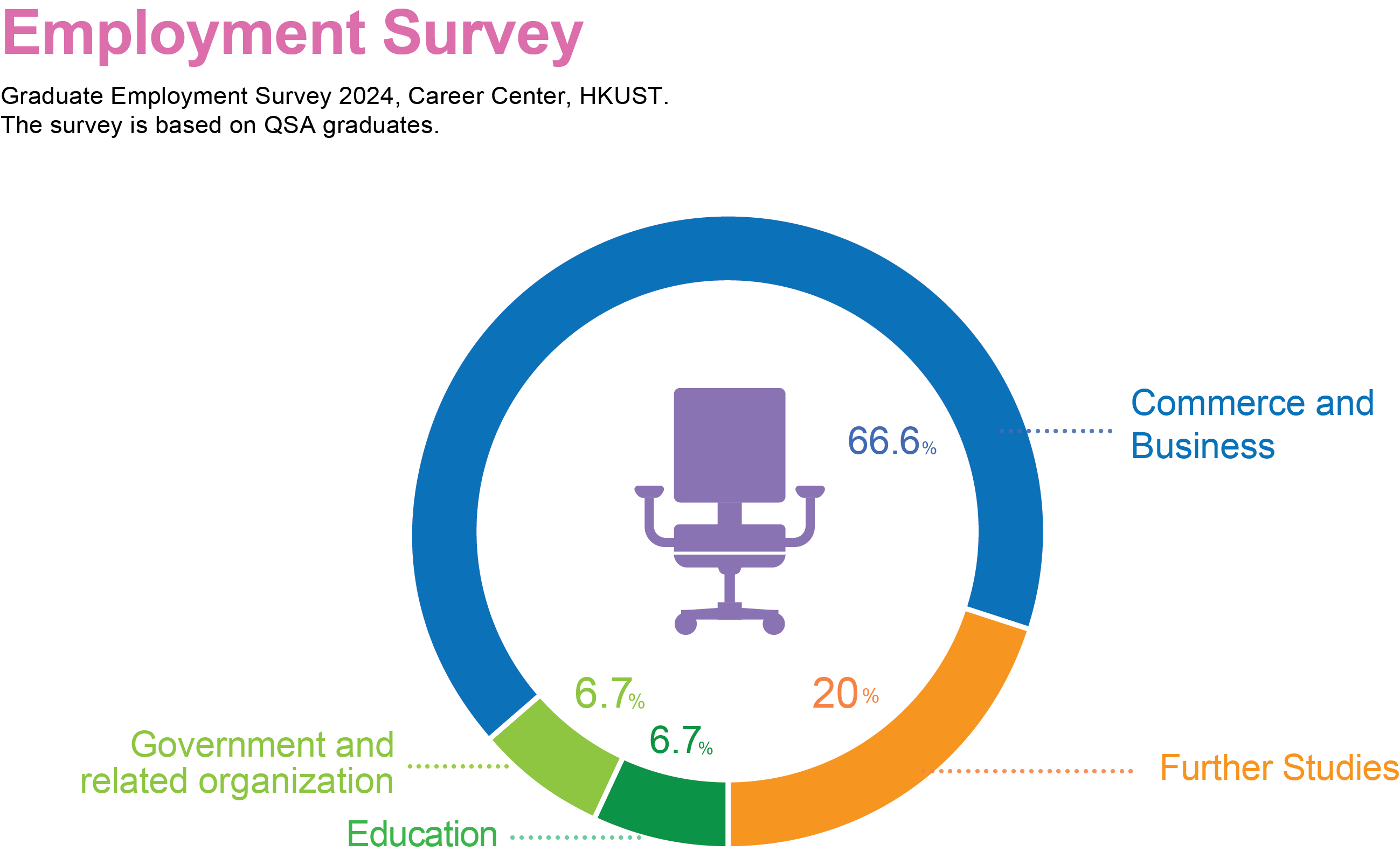
We intend to prepare graduates to work in business, government, or the non-profit sector, where demand is rising for employees who not only have quantitative analytic skills, but also understand the complexities and challenges of working with social data, and are able to communicate results to decision-makers. Social data of various forms is accumulating rapidly, creating a need for employees who have the right combination of hard skills to analyze it effectively, and soft skills to interpret and present the results for audiences of decision-makers, colleagues, stakeholders and the public.
Employment Survey:
The 2024 Employment Survey showcases the promising career prospects for graduates in various sectors, emphasizing the increasing demand for individuals with a blend of quantitative analytic skills and a deep understanding of social data dynamics. It underscores the importance of effective communication of results to stakeholders and decision-makers in today's data-driven landscape.

Our goal is to produce well-rounded graduates who can:
- Define a question that can be addressed by the quantitative analysis of social data
- Design a study to address this question, following basic social science principles for analyzing social data
- Select appropriate data and method for their study, prepare data, and execute the analysis
- Interpret their results in a way that reflects understanding of important social processes
- Present results in a non-technical fashion to a non-expert audience
Based on discussions with recruiters, examples of the types of positions we expect graduates to be competitive for include:
Business
- Marketing involving quantitative analysis of customer and other data
- Human resources involving analysis of employee data
- Data analyst, emphasizing demographic, economic and social data
- Trainee programs in management consulting and banking looking for graduates with a combination of hard and soft skills
- Graduates will also be well-prepared for postgraduate study in social science or professional schools
Government
- Planning, research and policy that require analysis of demographic, economic, and other statistical data
- Data collection, including statistical agencies
Non-profits
- Planning, research and policy involving analysis of data on stakeholders, clients, and social and economic planning
- Fundraising and outreach that involves analysis of data on donors and prospects
Last update: 24 Mar 2025 12:00